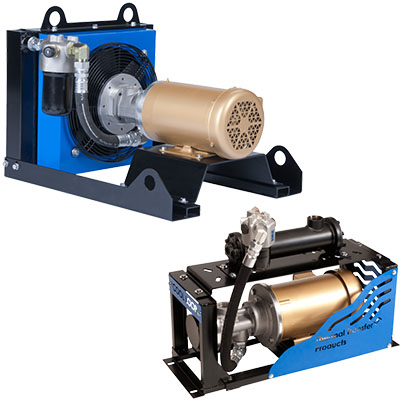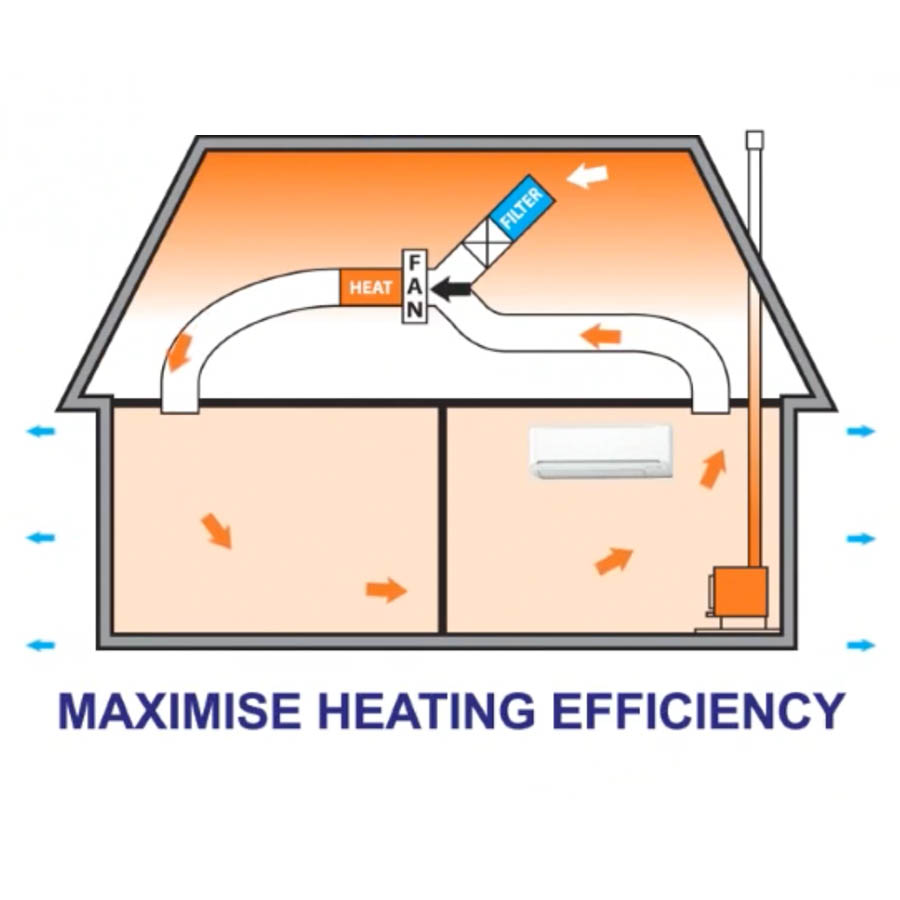DVS Heat Transfer Systems: A Definitive Guide to Smarter IoT Integration
Wiki Article
A Comprehensive Overview to Picking the Right Heat Transfer Solutions for Your Requirements
Choosing the ideal Heat transfer system is necessary for functional performance. Various systems satisfy various demands, influenced by factors such as temperature level variety and fluid kind. Recognizing the concepts behind Heat transfer, such as transmission, convection, and radiation, is critical. In addition, evaluating power sources and upkeep methods can affect long-term efficiency. A closer examination of these considerations reveals just how to customize a system to certain demands. What should one prioritize in this complex decision-making process?Comprehending Heat Transfer: Key Principles and Concepts
Heat transfer may seem like a simple idea, it encompasses a variety of concepts that are basic for reliable system design - DVS Heat Transfer Systems. Recognizing these concepts is crucial for engineers and developers that aim to maximize thermal efficiency in various applications. Transmission, for example, entails the transfer of Heat with solid products, while convection describes the activity of Heat within liquids. Radiation, another key principle, explains exactly how Heat can be transferred via electromagnetic waves. Each of these mechanisms plays an essential role in figuring out exactly how power relocates within a system. By completely comprehending these concepts, specialists can make educated decisions, making certain that Heat transfer systems operate efficiently and satisfy the specific needs of their applications
Kinds of Heat Transfer Equipments: A Review
Understanding the concepts of Heat transfer prepares for checking out the various sorts of Heat transfer systems available. Heat transfer systems can be classified mainly right into three types: conduction, radiation, and convection. Transmission involves Heat transfer through strong materials, depending on direct call between bits. Convection, on the various other hand, takes place in liquids (fluids and gases) where the activity of the fluid itself facilitates Heat transfer. Radiation involves the transfer of Heat through electro-magnetic waves and does not need a medium, allowing it to occur in a vacuum. Each sort of system has distinct characteristics and applications, making it essential for individuals and companies to thoroughly assess their certain requirements when choosing the most appropriate Heat transfer solution.Applications of Heat Transfer Systems in Various Industries
Heat transfer systems play a necessary duty throughout different industries, affecting efficiency and product top quality. In commercial production procedures, they facilitate accurate temperature control, while in food and beverage processing, they assure security and conservation. In addition, HVAC and climate control systems depend greatly on efficient Heat transfer to preserve comfy settings.Industrial Production Processes

Various industrial production procedures count greatly on effective Heat transfer systems to optimize productivity and improve item top quality. In markets such as metalworking, Heat exchangers play a crucial duty in keeping perfect temperatures during welding, spreading, and creating. These systems guarantee consistent Heat circulation, which is vital for accomplishing wanted material homes. In the chemical manufacturing market, Heat transfer systems promote specific temperature control during responses, influencing yield and safety and security. In fabric production, efficient Heat monitoring is crucial for dyeing and completing procedures, affecting color consistency and fabric high quality. By selecting ideal Heat transfer innovations, producers can enhance energy effectiveness and minimize functional costs, inevitably leading to a more affordable and sustainable production setting.
Food and Beverage Handling
Efficient Heat transfer systems are just as crucial in the food and beverage handling industry, where preserving excellent temperatures is critical for food safety and security and quality. These systems play an essential function in processes such as pasteurization, cooking, and sterilization, guaranteeing that items are safe for intake and preserve their dietary value. Heat exchangers, as an example, effectively move Heat between fluids, maximizing energy usage while minimizing temperature level variations. Additionally, refrigeration systems are essential for maintaining subject to spoiling items and extending rack life. The choice of Heat transfer modern technology directly influences operational effectiveness and item honesty, making it vital for food and drink suppliers to select the proper systems customized to their details handling needs. This careful choice ultimately contributes to consumer satisfaction and food safety.
HVAC and Environment Control
While several industries count on Heat transfer systems for efficiency, COOLING AND HEATING (Heating, Air Flow, and Air Conditioning) plays an important role in preserving interior environment control across numerous setups. These systems utilize Heat transfer concepts to regulate temperature level, moisture, and air high quality, making certain convenience and safety and security in domestic, commercial, and industrial environments. Appropriately designed HVAC systems boost power efficiency, decrease operational expenses, and decrease environmental impact. In industrial buildings, for circumstances, efficient environment control adds to staff member performance and consumer complete satisfaction. In industrial applications, heating and cooling systems assist preserve ideal problems for tools operation and item preservation. Choosing the best Heat transfer system is vital for meeting specific environment control needs and achieving overall system performance.Examining Energy Resources for Heat Transfer Solutions
In examining energy sources for Heat transfer systems, a comparison of renewable power choices and nonrenewable fuel source considerations is crucial. Renewable sources, such as solar and wind, offer sustainable choices that can reduce environmental effect. Conversely, fossil fuels continue to be common as a result of their established infrastructure and energy thickness, prompting a careful assessment of both options.Renewable Resource Options

Fossil Gas Factors To Consider
Examining fossil gas factors to consider is essential for the efficiency and sustainability of Heat transfer systems. Nonrenewable fuel sources, such as all-natural gas, oil, and coal, are typical energy resources that provide significant Heat result, making them prominent options for residential and commercial applications. Their environmental influence, consisting of greenhouse gas emissions and source depletion, increases concerns. When selecting a warmth transfer system, it is important to analyze the availability, cost, and regulative factors connected with these fuels. In addition, the effectiveness of nonrenewable fuel source systems have to be considered, as higher effectiveness can alleviate some ecological downsides. Eventually, a well balanced approach weighing performance my latest blog post and sustainability can guide decision-makers towards the most proper Heat transfer remedy for their specific needs.Aspects to Consider When Choosing a Warmth Transfer System
Choosing an appropriate Heat transfer system calls for mindful consideration of various elements that can significantly affect efficiency and efficiency. One vital variable is the operating temperature level array, which determines the materials and style appropriate for the application. Furthermore, the kind of liquid used in the system-- whether gas or fluid-- affects Heat transfer effectiveness and compatibility. The system's dimension and capacity must line up with the specific requirements of the operation to stay clear of inadequacies. Energy resource accessibility is also vital, influencing operating expenses and sustainability. The setup setting, consisting of area restrictions and access for upkeep, plays a substantial role in system selection. Governing conformity and safety and security standards must be considered to ensure the system fulfills all legal demands.Maintenance and Performance Optimization for Heat Transfer Equipments
Preserving Heat transfer systems is important for ensuring optimal effectiveness and longevity. Routine maintenance activities, such as cleansing Heat exchangers and examining insulation, help stop efficiency losses because of fouling and thermal bridging. Furthermore, monitoring system specifications, consisting of pressure and temperature level, permits very early discovery of abnormalities, lessening downtime and pricey fixings. Carrying out a preventative maintenance schedule can maximize performance and extend the life expectancy of components. Additionally, updating to sophisticated control systems can improve operational effectiveness by getting used to varying problems and lots. By focusing on maintenance and efficiency optimization, operators can accomplish minimized power intake, reduced operational prices, and boosted overall system dependability, eventually leading to much better source use and an extra lasting procedure.Future Trends in Heat Transfer Technologies
As industries click for more progressively prioritize sustainability and energy efficiency, future patterns in Heat transfer technologies are readied to go through considerable makeovers. Technologies such as advanced products, consisting of carbon nanotubes and nanofluids, promise boosted thermal conductivity and performance. In addition, the assimilation of renewable power sources into Heat transfer systems is gaining momentum, promoting environment-friendly options. Smart innovations, including IoT sensors, are anticipated to change surveillance and control, making it possible for real-time information evaluation for enhanced performance. In addition, the advancement of modular and compact systems will promote much easier installation and upkeep, dealing with varied applications. These innovations suggest a change in the direction of more lasting, effective, and adaptable Heat transfer solutions, straightening with worldwide power objectives and environmental criteria.
Frequently Asked Questions
What Are the Ecological Impacts of Heat Transfer Systems?
The environmental impacts of Heat transfer systems can consist of greenhouse gas exhausts, energy usage, and prospective thermal air pollution. Furthermore, inappropriate disposal of products and ineffectiveness can add to source deficiency and ecosystem interruption.Exactly how Do I Determine the Cost-Effectiveness of a Heat Transfer System?
To compute the cost-effectiveness of a warm transfer system, one should examine initial prices, operational expenditures, maintenance needs, and energy performance, contrasting these aspects against the expected life expectancy and efficiency of the system.Can Heat Transfer Solution Be Used in Residential Setups?
Heat transfer systems can undoubtedly be made use of in property setups. They offer effective heating and cooling services, making homes a lot more comfy while possibly reducing power prices. Their versatility permits various applications in household atmospheres.What Safety And Security Regulations Put On Heat Transfer Solutions?
Security laws for Heat transfer systems generally include guidelines on operation, installment, and maintenance. Compliance with neighborhood building ordinance, producer specifications, and sector criteria is vital to guarantee efficient and safe system performance in numerous applications.Exactly How Do Various Materials Affect Heat Transfer Performance?

Transmission, for circumstances, involves the transfer of Heat with strong materials, while convection refers to the movement of Heat within fluids. Comprehending the concepts of Heat transfer lays the foundation for exploring the numerous kinds of Heat transfer systems available. Heat exchangers, for instance, successfully move Heat in between fluids, optimizing energy use discover this info here while reducing temperature fluctuations. In evaluating energy sources for Heat transfer systems, a comparison of renewable power options and fossil gas factors to consider is important. Steels, such as copper and aluminum, conduct Heat effectively, whereas insulators like rubber and glass reduce down Heat circulation.
Report this wiki page